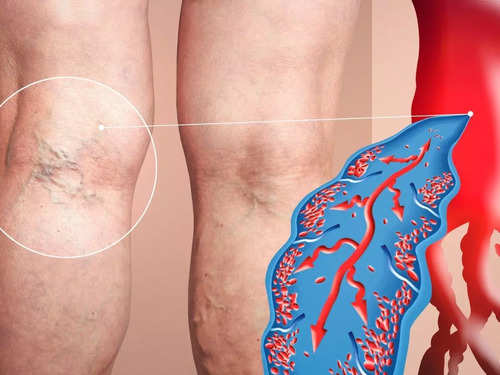Deep Vein Thrombosis Symptoms: Signs Of Blood Clot Which Can Show Up In Your Legs
Beware of these signs of a blood clot in your legs
Blood clots can be both good and bad. In some cases, it helps repair the damage caused to blood vessels, preventing one from losing too much blood in certain instances, such as when you’re injured or cut.
Although steady, immobile clots do not cause any harm, there’s a possibility that it may move around, which can be very dangerous and concerning. Apart from that, when a blood clot occurs in your veins, it may not always dissolve on its own, triggering a life-threatening circumstance.
One of the most serious implications of blood clots is Deep Vein Thrombosis (DVT), which can also prove fatal on certain occasions. Let us first find out what DVT is.
Read more: The dangers of sleeping while sitting: Can it be fatal?

What is Deep Vein Thrombosis (DVT)?
According to the National Blood Clot Alliance, over 200 people die every day from the consequences of a blood clot. It suggests that a person can develop a clot at 25 or even at the age of 85 years.
Deep Vein Thrombosis occurs when a blood clot, also known as thrombus, forms in one or more of the deep veins in your body, especially legs. It can be a negative outcome of long hours of sleeping in one position or sleeping while sitting, with no movements at all.
If left undiagnosed or untreated, DVT may lead to an emergency situation, even cause death in severe situations. The biggest risk occurs when part of the clot breaks off and travels to the lung or brain, resulting in significant damage, causing sudden deaths.
DVT can be identified with the help of symptoms you may experience in your leg. Here are some of the signs you must watch out for.

Swelling and pain in one leg, rarely in both the legs
When a person is affected with deep vein thrombosis, they’re likely to develop swelling and pain in the affected leg. It is highly unusual to experience the same in both the legs. It is a common symptom and you may have a throbbing, cramping pain in one leg, probably in the calf or thigh.

Reddened, warm skin around the affected area, resulting from an inflammation
A deep vein thrombosis may also lead to red, discoloured skin. This could be due to the inflammation occurring inside the leg. The affected area around the leg that is swollen or hurts may also feel warmer than usual.

Swollen veins, hard and painful to touch
In addition to all the problems associated with a deep vein thrombosis, it is likely that the veins near the skin’s surface may become larger than usual, and may feel very hard and painful to touch.

When to call a doctor
As and when you notice signs of DVT, it is best to call your doctor. Given that early diagnosis may prevent more serious complications, consult a medical profession immediately.
Furthermore, if you develop signs or symptoms of a pulmonary embolism (PE), a serious complication associated with deep vein thrombosis, seek emergency medical help.


